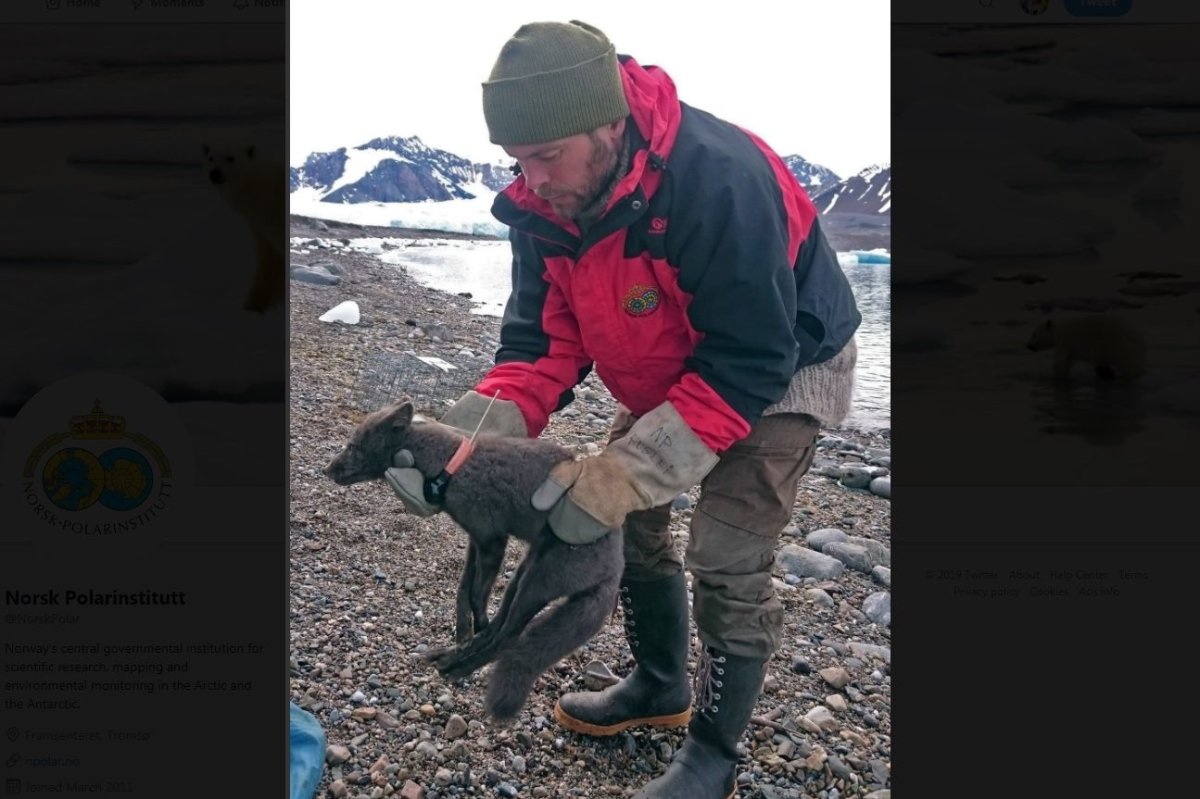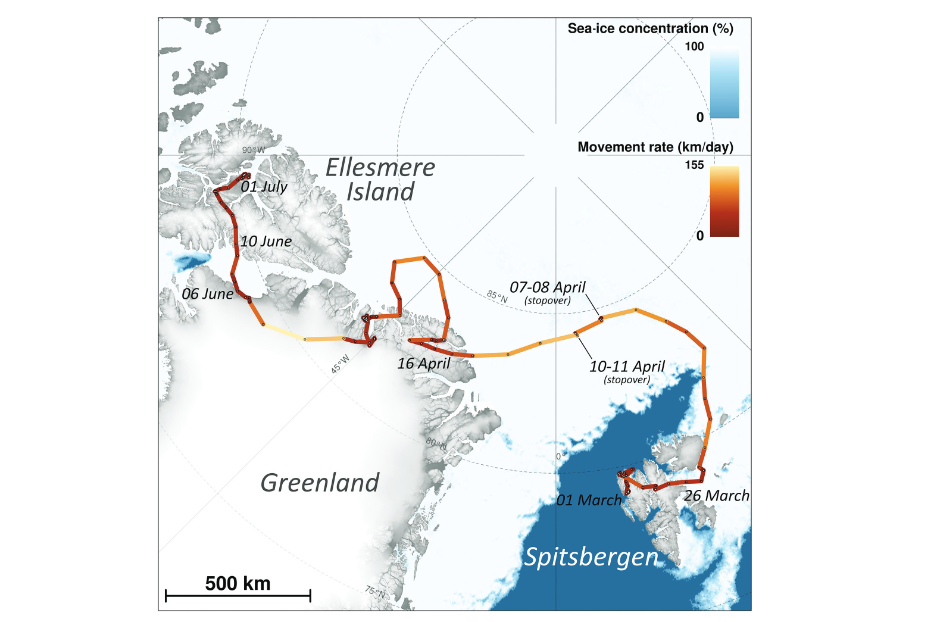Barely one year old, an Arctic fox has likely set a record for its species, trekking more than 3,500 kilometres from Norway to Canada in just 76 days.

The fox’s great adventure started in Spitsbergen, a large island in Norway’s Svalbard archipelago, on March 26, 2018. Norwegian researchers followed the young female fox, fitted with a tracking device, as it travelled across masses of sea ice at an uncanny rate of speed.
The fox clocked 1,512 kilometres in 21 days and arrived in Greenland on April 16. Her journey brought her to Ellesmere Island, Nunavut, in time for Canada Day on July 1, 2018.
The researchers believe the Arctic fox’s journey is one of the longest ever recorded.
The results left scientists wide-eyed — and skeptical.
“We first did not believe it was true,” researcher Eva Fuglei said. “We just had to keep up with what the fox did.”
Fuglei said she thought maybe the fox had died or made its way onto a boat, causing the satellite data to seem skewed.
But “there are no boats in that area” deep in the ice, Fuglei said.
Fuglei and researchers from the Norwegian Institute for Nature Research broke down the fox’s journey in a research paper titled “One female’s long run across sea ice.”
In it, they said the Arctic fox species has “exceptional mobility and endurance,” especially in polar environments, and that while migration was expected, it was her speed of travel that astonished them.
Roaming across icy terrain, the fox moved an average of 46.3 kilometres per day. The most it travelled in a single day was 155 kilometres across an ice sheet in Greenland.
“This is the fastest movement rate recorded for this species,” the paper reads.
WATCH: Antarctic ice is melting faster than expected

It did, however, slow down on two occasions — travelling less than 10 kilometres per day — possibly due to tough land, weather or hunting opportunities, the scientists said.
The fox likely survived on “marine food resources,” like seabirds, before settling on Ellesmere Island. There, she feasted on lemmings, a small Arctic rodent.
The institute said the switch in food source shows the fox’s ability to adapt to other ecosystems.
“This shows what capacity this little animal can have,” Fuglei told Norwegian news outlet NRK.
As for why the little fox made the trip, scientists have no easy answer.
The ice was “crucial” for the fox to take the spanning journey, according to researchers, which raises concerns about what may happen to the species as sea ice melts and patterns change.
Norway’s climate and environment minister pointed the finger at climate change.
“This is another example of how important sea ice is to wildlife in the Arctic,” Ola Elvestuen told the institute.
“The warming in the north is frighteningly fast. We must cut emissions quickly to prevent the sea ice from disappearing all summer.”
WATCH: Climate change on fast-forward in Canada, report suggests

The Arctic has shown consistent and steady warming and ice melt over the years. Greenland’s melt season began on May 3 this year — the earliest on record in a database that stretches back to 1980.
While the study of ice melt in the Arctic is ongoing, the tracking of this particular fox stopped short this year. The satellite transmitter attached to the young fox stopped working in February.





Comments